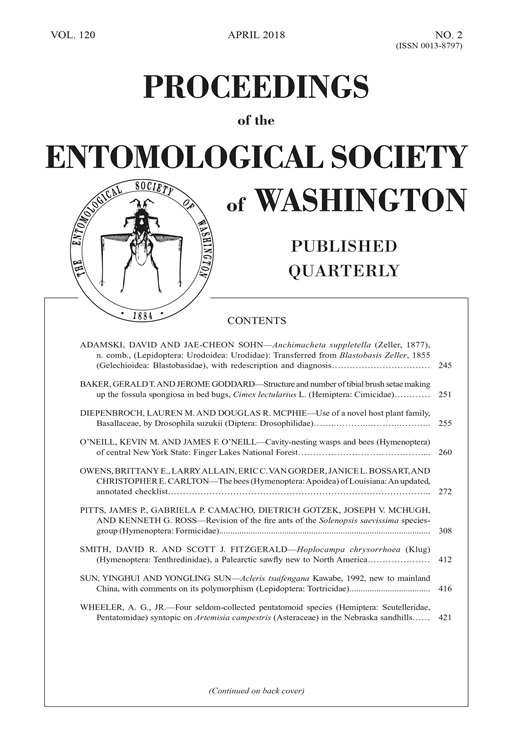The fossula spongiosa is a hairy attachment structure found on the apex of the fore tibia (and sometimes other legs) in several groups of cimicomorphan Heteroptera. In this study, the tibial brush setae making up the fossula spongiosa (tibial pad) of the bed bug, Cimex lectularius, were examined by scanning electron microscopy (SEM) and transmission electron microscopy (TEM). Tibial brush setae were found on all legs and are long and slender and situated in a pad at the apex of the ventral surface of the tibia. The distal end of each seta is spatulate with a smooth dorsal surface and a ventral surface with rounded protuberences. TEM analysis showed that the tibial brush setae are hollow and the base of the hollow setae are in contract with epidermal cells. Trichoid sensilla are dispersed among the tribial brush setae. As for numbers, leg I of the female has significantly more brush setae than leg II, and leg II more than leg III.
How to translate text using browser tools
17 May 2018
Structure and Number of Tibial Brush Setae Making up the Fossula Spongiosa in Bed Bugs, Cimex lectularius L. (Hemiptera: Cimicidae)
Gerald T. Baker,
Jerome Goddard
ACCESS THE FULL ARTICLE
scanning electron microscopy
transmission electron microscopy
ultrastructure





